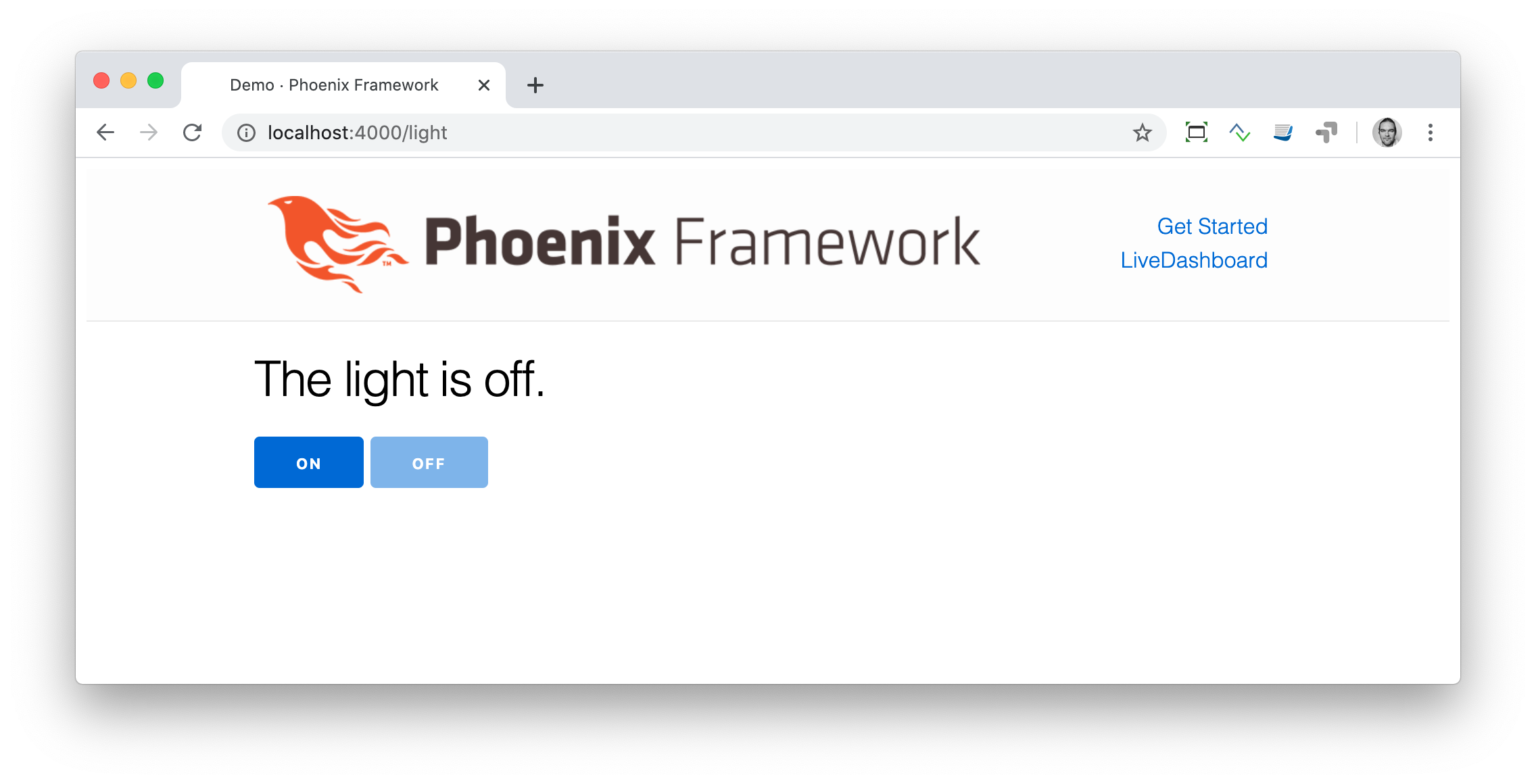
This is where the default render/1 function comes from. Where LiveView templates work differently is when that data changes. How can I use a single Increment/Decrement buttons to control multiple numeric controls? Search: Phoenix Liveview File Upload. LiveView is an exciting alternative to a single-page application (SPA) written with JavaScript which communicates with the server via JSON and changes the content The component will do the searching and stuff, but when a selection is made a event is triggered that the parent liveview can react to.

When we connect to the dashboard with a browser we immediately see the LIVEVIEW MOUNT log which prints the LiveView process ID #PID.Then, when we add Phoenix Presence inside LiveView |> A Simple Example. The Phoenix.PubSub module has a Integrate Phoenix PubSub with LiveView to build real-time features capable of broadcasting updates across a set of clients. RestClient: A Phoenix LiveView Experiment.
#Phoenix liveview examples code
In an earlier post, we used the brand new (still pre-release at time of writing) Phoenix LiveView library to build a real-time feature with very little backend code and even less JavaScript. To reduce duplicity and complexity in your apps, Phoenix LiveView comes with the possibility to use reusable components. I wanted to make a small sample project to see how close we can get to the single page application thats achievable with JavaScript frameworks like Vue or React. we'll start with a humble example, then we'll establish the primitives LiveView needed to solve it.

LiveComponents are a way to help compartmentalize state and events when using Phoenix LiveView. There are a number of ways to populate the value argument, but we wont use that data point in this By Sophie DeBenedetto. Either by using Phoenix channels with Phoenix Presence, or by using Phoenix LiveView and build realtime interactive apps without frontend complexity. You will want to learn them, because they are a key part of interactivity in Phoenix.


 0 kommentar(er)
0 kommentar(er)
